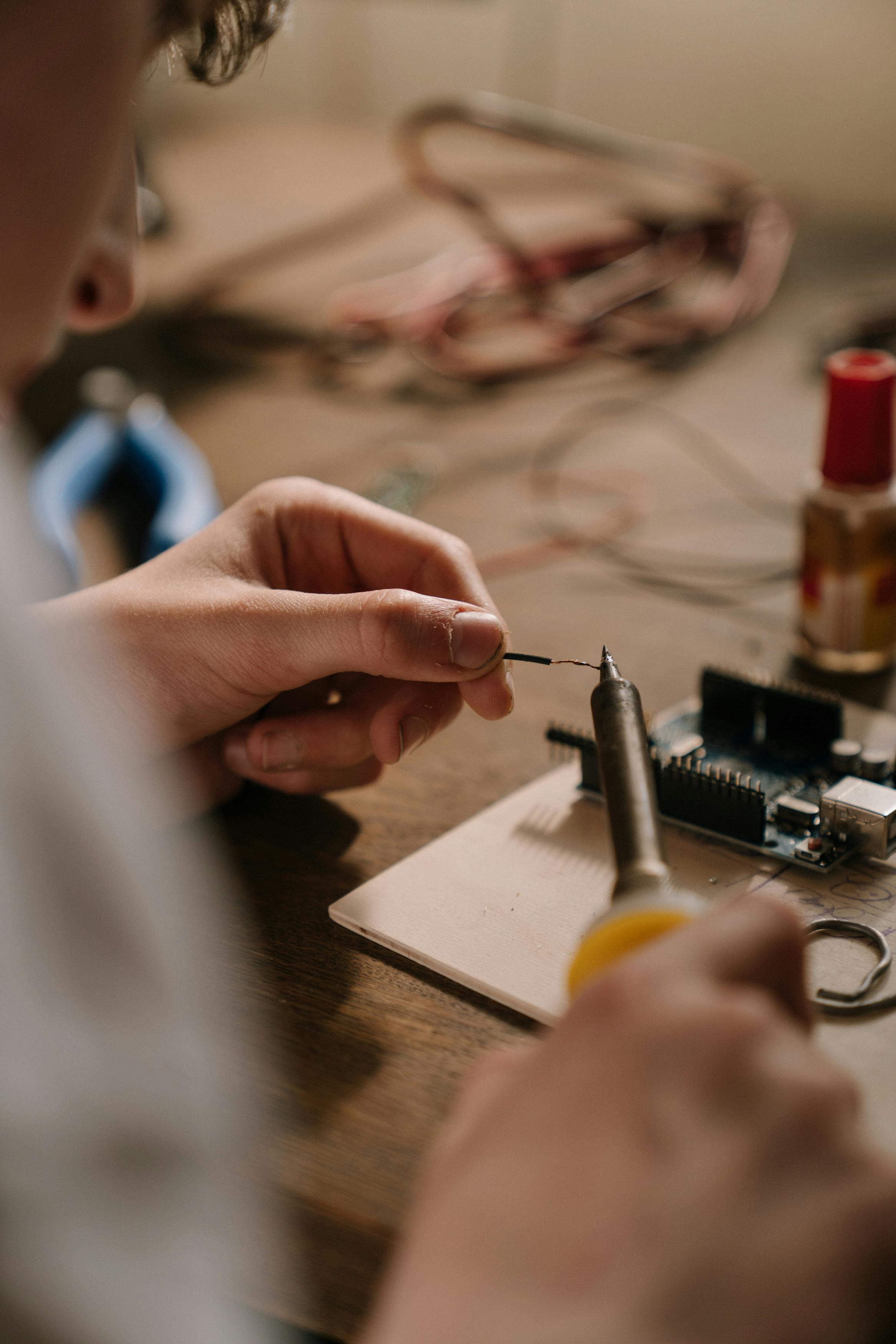Smart Ways to Optimize PayPal for Effective Online Transactions in 2025

Effective Ways to Set Up PayPal for Modern Online Payments in 2025

Understanding PayPal Account Types
When considering how to set up a PayPal account, it's crucial to grasp the different PayPal account options available. PayPal offers two primary account types: the PayPal personal account and the PayPal business account. A personal account caters to individuals for online shopping and basic transactions, while a business account provides additional features like payment processing and invoicing for enterprises. For businesses, it enables PayPal integrations with e-commerce platforms and gives access to merchant services that can enhance their payment process.
Sign Up Process
To begin your journey, the first step is to create a PayPal account. Visit the PayPal website and select "Sign Up." You will need to provide personal information, including your email address and a password. Once you've initiated the PayPal registration, you will receive a confirmation email to verify your account. This step is vital as it secures your account and ensures you can receive payments swiftly.
Choosing Your Account Type
After completing the PayPal registration, selecting the right account type is essential. If you are a freelancer, the PayPal personal account might suffice for handling one-off payments. However, if you run an online store or require more extensive transaction capabilities, opt for a PayPal business account. This account type allows you to manage subscriptions, send invoices, and access additional features designed for businesses.
Important PayPal Features
As you set up PayPal, familiarize yourself with the useful features available in both account types. Some notable ones include the ability to send money, receive payments, and monitor transactions effectively. The PayPal mobile app setup allows users to manage their accounts on the go, making it convenient for those who need to access their finances anywhere. Leveraging these features can optimize your payment processes and enhance the overall experience.
Linking Bank Accounts and Payment Methods
To fully utilize your PayPal account, linking your bank account is a critical step. This process allows for seamless fund transfers in and out of your PayPal account, facilitating both payments received and withdrawals. When you first log into your account, navigate to “Wallet,” then select “Link a New Account.” Here, follow the prompts to add your bank details securely.
Linking a Bank Account to PayPal
The linking bank account to PayPal process involves providing your bank name and account number. PayPal will verify this link by depositing a small amount into your bank account. You'll need to confirm this deposit by entering the amount in PayPal. This verification process fortifies the security of your transactions and affirms your identity on the platform.
Adding a Credit Card to PayPal
In addition to a bank account, you may want to add a credit card to PayPal. This is particularly useful for instant payments or online shopping via platforms that accept PayPal. Go back to the “Wallet” section and select “Link a New Card.” Enter your credit card details and billing address to complete this step. By doing this, you enhance your transaction capabilities and increase the speed of your payments.
Setting Up Payment Methods
Next, it's beneficial to explore the various PayPal payment methods you can use. Options include one-time transactions, automatic bill payments, and subscriptions. Automating payments helps avoid missed deadlines and late fees, proving particularly useful for managing recurring expenses such as memberships or subscription services. Neglecting to set this up can lead to unwanted account interruptions or late charges.
Securing Your PayPal Account
As you embark on your PayPal journey, it cannot be overstated how critical it is to prioritize PayPal security settings. With a clear understanding of potential risks, you can implement best practices to protect your account against fraud and unauthorized access. Regularly updating passwords and enabling two-factor authentication are essential steps to secure your accounts effectively.
PayPal Verification Process
The PayPal verification process enhances user safety by ensuring account authenticity. To verify your identity, you may be prompted to upload identification documents or confirm your phone number. Completing this process boosts your transaction limits, enabling you to use more features without interruptions. Staying compliant with these verification steps ensures that your payments proceed without delay.
Managing PayPal Notifications Settings
Setting your PayPal notifications settings allows you to stay updated on transactions and security alerts. You can choose to receive email notifications or enable push notifications through the mobile app. Keeping abreast of these alerts is vital for quickly responding to any suspicious activities on your account, thereby preventing unauthorized actions.
Best Practices for PayPal Security
To safeguard your digital transactions, familiarize yourself with best practices for PayPal security. This includes avoiding public Wi-Fi for transactions and ensuring your computer has updated security software. By routinely reviewing your account activity and transaction history, you can quickly catch any discrepancies. Implementing these strategies will significantly increase your ability to enjoy a secure PayPal experience.
Managing Payments and Transactions Effectively
Once your PayPal account is fully operational, it's time to optimize for daily transactions. Whether you're a freelancer receiving payments or a business owner selling products, managing transactions efficiently is vital for smooth operations. PayPal's tools make it easy to monitor and manage incoming and outgoing funds, setting you up for financial clarity.
Monitoring PayPal Transactions
Using PayPal transaction history review allows you to track all incoming payments and outgoing expenses. Regularly reviewing your transaction history helps ensure that all payments align with your records. In the "Activity" section of PayPal, you can access forecasts, statuses, and filter transactions by time or type. This feature is particularly vital for bookkeeping and accounting purposes.
Handling PayPal Disputes and Refunds
Unforeseen issues may arise, requiring you to understand PayPal dispute resolution best practices. If a transaction does not go as planned, you may have to file a dispute through the Resolution Center. Follow the instructions provided in PayPal to report issues efficiently. Familiarizing yourself with PayPal refunds ensures that should you need to return funds, the process remains straightforward and stress-free.
Implementing PayPal for International Transactions
For businesses operating globally, understanding using PayPal for international transactions is essential. PayPal supports transactions in multiple currencies, which can enhance your business capabilities. You'll need to manage PayPal currency conversion and potential fees that may arise during international transactions. For optimal cost-effectiveness, frequently monitor conversion rates and transaction fees that might impact your margins.
Key Takeaways
- Understand the different account types: personal vs. business.
- Link your bank accounts and payment methods securely.
- Prioritize account security through verification and notification settings.
- Manage payments and monitor transactions effectively.
- Use PayPal intelligently for cost-effective international transactions.
FAQ
1. How do I verify my identity on PayPal?
To verify your identity on PayPal, go to your account settings and look for the verification options. You can provide proof of identity via government-issued ID or confirm your bank information. Completing this step will raise your transaction limits and increase the security of your account.
2. What are PayPal transaction fees?
PayPal transaction fees vary based on several factors, including the type of transaction and the country. Always check the PayPal fees explanation on their official website to stay informed about any changes that might affect your business operations. Typically, fees can range from 2.9% + a fixed fee depending on the currency.
3. Can I set up automatic payments via PayPal?
Yes, PayPal allows you to set up automatic payments via PayPal for utilities, subscriptions, or any recurring payments. To set this up, navigate to your account settings, select "Payments," then follow the prompts to manage or establish automatic payments for specified services.
4. What should I do if I encounter issues with my PayPal account?
If you experience issues with your PayPal account, the first step is to check the PayPal customer support page for troubleshooting resources or FAQs that may address your question. Additionally, consider reaching out to their support team for direct assistance to resolve your issues efficiently.
5. How can I optimize e-commerce payments with PayPal?
Optimizing your e-commerce payments with PayPal involves using tools provided by PayPal for easier checkout experiences. Consider integrating a PayPal checkout button on your website and utilizing the API for streamlined payments. Additionally, ensure your account is set up for automated invoicing and managing recurring payments for subscriptions to improve customer convenience.